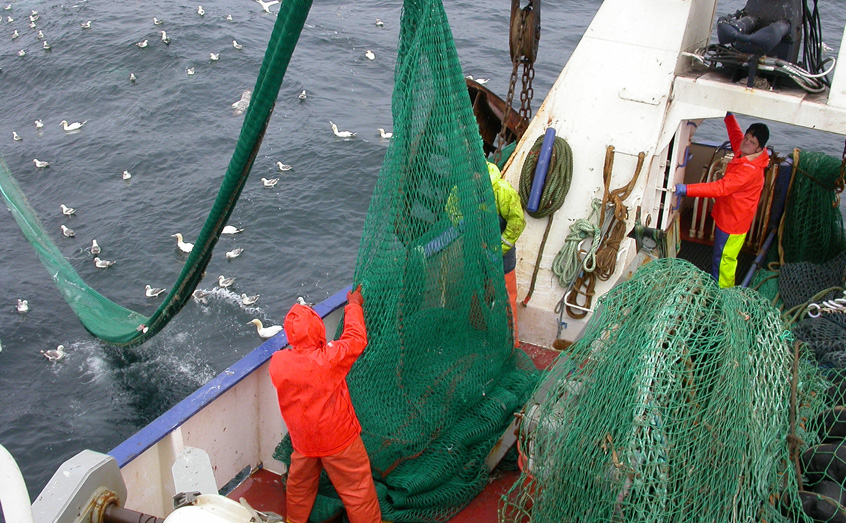SAMS news room
Fishers invited to help assess entanglement risk

Scientists are inviting fishers to help inform a new research project investigating whether fishing gear debris collecting on offshore wind farm developments will pose an increased entanglement risk for whales and other marine mammals.
SAMS Enterprise, the commercial arm of SAMS, will lead the two-year project to assess the potential for lost and discarded gears, ropes and other debris to collect on offshore wind farm moorings and subsea structures.
As part of the project, the research team is seeking advice from fishers, through an anonymous online questionnaire to establish the distribution and frequency of gear loss in Scottish waters.
The Scottish Government, which is funding the research, aims to generate the equivalent of 50% of Scotland’s overall energy consumption from renewable sources by 2030, with a target of decarbonising the country’s energy system almost completely by 2050. Offshore wind is expected to play a large role in meeting that commitment.
Lead investigator Dr Steven Benjamins of SAMS said entanglement risks such as netting that collects on the foundations of wind turbines, or around their moorings could be an example of ‘ghost fishing’, the term given to lost and discarded fishing gear that can pose a risk to sensitive marine species.
He added: “While we must continue to move to renewable energy solutions, there are still unknowns around how such a change in the marine environment may impact the ecology of our ocean.
“There is potential for lost fishing gear and other debris to collect on wind turbine foundations or their moorings, creating an increased entanglement risk to marine wildlife, but currently there is no information available about the likelihood of such an event occurring.
“With the projected expansion of offshore wind energy, it is possible that the entanglement risk also grows. This is what we need to find out.”
The research team, which also includes researchers from SAMS’ UHI partner UHI Shetland and HiDef Aerial Surveying will focus on Scotland’s east coast as well as the Northern Isles and will initially seek to establish how often fishing gear is lost across different fishing sectors, and where fishers most often encounter lost gear and ropes.
The researchers will also investigate how long it takes for different components of fishing gear to sink and whether this affects the level of risk they pose.
Meanwhile, re-analysis of existing aerial survey footage (led by HiDef Aerial Surveying) will seek to determine densities of floating marine debris that could potentially snag on wind farms. Finally, the team will use state-of-the-art oceanographic modelling techniques to plot the likely movements of such marine debris and where it may accumulate.
The project will result in a framework which the Scottish Government and offshore wind developers can use to assess the likelihood of entanglement risk around wind farms resulting from lost fishing gears and other marine debris.
Dr Rachel Shucksmith of UHI Shetland said: “This survey will allow us to better understand the loss of fishing gear around Scotland and its causes. We are keen to hear from fishermen around Scotland from all fleet segments.”
The project is funded via the ScotMER (Science and research - Marine renewable energy - gov.scot) programme and it was a public tender process (Ref: CASE/701072).
To access the anonymous questionnaire and give your thoughts on the occurrence of lost fishing gear, please visit: https://www.surveymonkey.com/r/XZRGHPG
